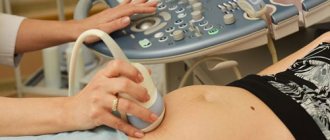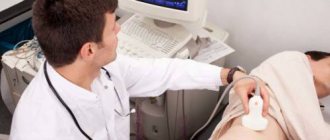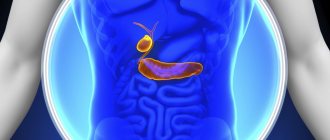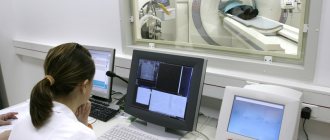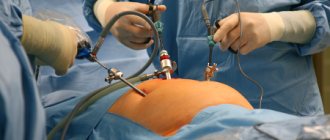Warehouse relocation to Europe. We sell hepatitis C drugs in Russia at the purchase price - warehouse liquidation Go to website
The role of the gallbladder in the human digestive system is significant, despite the fact that it can live without it. Bile synthesized in the liver is necessary for the body to effectively absorb the substances it needs from food. In addition, thanks to liver acid, food is processed properly by the digestive organs.
One of the ways to remove the gallbladder is laparoscopy.
Under the influence of certain factors and during the aging process, the organ is exposed to all sorts of influences, as a result of which it ceases to perform its functions efficiently. For a number of reasons, stones may appear in the bile ducts, interfering with the outflow or completely blocking it. Such a serious pathology becomes a direct threat to human life; therefore, in a number of situations, surgery is performed to eliminate it.
Today, the disease accompanied by the formation of stones is common, so there are techniques that allow surgical intervention with the least damage to the body. One such method is laparoscopy. The essence of this method is to remove the organ through a minimal incision. This allows a person who has undergone surgery to be relieved of the excruciating pain that occurs during the postoperative period, and also significantly reduces the length of hospital treatment.
Exactly how many days you need to stay in the hospital in cases where the gallbladder is removed depends on the individual characteristics of the body and the specific method by which laparoscopy was performed.
Benefits of laparoscopy
This type of surgical intervention has a number of positive aspects compared to conventional abdominal surgery. These include:
- During the procedure, no incision will be made in the abdominal cavity. It is carried out using the method of several punctures, which do not exceed one centimeter in size.
- No consequences after the operation.
- The rehabilitation period in the hospital lasts three days.
- After the operation, the patient does not feel severe pain, so there is no need to use a strong narcotic painkiller.
- The body recovers completely in two weeks; during abdominal surgery, this period can take two months.
Recovery in hospital
During the first week in the hospital, the patient must perform a number of procedures to improve his condition:
- breathing exercises, as far as possible in the patient’s condition, for a couple of minutes at least 7 times a day. Take 15 consecutive breaths (deeply) through the nose and exhalations through the mouth;
- the patient is allowed to get up 3-4 hours after laparoscopy;
- Following a diet is necessary for the gradual adaptation of the gastrointestinal tract to the absence of a bile storage system;
- gymnastics allows you to restore motor activity;
- Treatment with medications involves the use of enzymes, antispasmodics and analgesics, and agents to correct paresis in the intestinal tract.
Disadvantages of laparoscopy
The operation to remove the gallbladder using laparoscopy has some contraindications. The laparoscopic method is not recommended for those people who are concerned about various diseases of the respiratory system.
A number of contraindications for laparoscopy:
We recommend reading:
Is it possible to do tubage with the gallbladder removed?
Heart diseases
- Problems with the heart and lungs.
- Pregnancy. The operation is contraindicated in the last trimester.
- Inability of blood to clot.
- Excess weight.
The patient is recommended to undergo a thorough medical examination. This is necessary to determine possible causes that may negatively affect the body after surgery.
Benefits and complications
During laparoscopy of the gallbladder, 4 punctures are made in the abdomen, into which surgical tubes (trocars) are inserted, and the gallbladder is removed through an opening in the navel. A laparoscope (video camera with a lighting device) allows you to monitor the progress of the operation.
The main indication for laparoscopic cholecystectomy is cholelithiasis (cholelithiasis). At the initial stage of calculous cholecystitis (stones in the gallbladder), conservative methods are used: diet, drug treatment, destruction of stones by ultrasound. In later stages, surgery is necessary.
Removal of the gallbladder is performed in the following cases:
- Acute inflammation of the gallbladder, which is accompanied by a high temperature that does not subside for a long time.
- The presence of large stones in the biliary system.
- Signs of inflammation of the peritoneum.
- Fibrous or purulent exudate is present in the abdominal space.
Reference. The gallbladder is removed through an open incision or laparoscopically. The latter method is considered more modern and safer.
Advantages of laparoscopic cholecystectomy:
- After surgery, the patient regains activity faster. After only 5-6 hours he is allowed to get out of bed under the supervision of medical staff.
- The wounds are small and heal quickly.
- The patient needs intensive care for no more than 2 hours.
- After surgery, the patient does not have to stay in bed for a long time.
- Laparoscopy of the gallbladder is less likely to cause complications than standard abdominal surgery.
- There are no large scars on the skin.
- The patient is discharged home earlier.
However, even laparoscopy can cause complications:
- Injury to nearby organs and vessels.
- Puncture of the gallbladder, stomach, colon, duodenum, inflammation of the skin around the navel.
- There is a risk of umbilical hernia in overweight patients with congenital muscle abnormalities.
After laparoscopy, the risk of hernia formation is lower than after standard surgery, so the patient does not have to wear a bandage. However, for the first 6 months he is prohibited from lifting weights or straining the muscles of the anterior abdominal wall. The patient should play sports, but about the set of exercises you need to consult a doctor.
Duration of surgery to remove the gallbladder
To determine how long the operation will take from the beginning (preparatory stage) to completion (the final stage), it is necessary to carefully examine the entire sequence of the surgical intervention. Laparoscopy is a modern method of removing the gallbladder. How long to stay in the hospital after such an operation is determined by the doctor, focusing on the individual characteristics of the patient’s body.
How long does surgery to remove an organ take? The operation takes on average one hour. Many factors influence its duration: the patient’s composition, characteristics of the liver and gall bladder, the presence of concomitant pathologies, the severity of inflammatory and cicatricial processes in the abdominal cavity. The doctor will not be able to determine exactly how long the operation will take in advance. The scope of the operation is expanded and more time is required due to the presence of stones in the bile duct and signs of jaundice. It will be better for the patient if the period of anesthesia does not last long and the operation takes place as quickly as possible. The operation may take a long time. There are cases when the duration of surgery lasts more than fifteen hours. Depending on the quality of the operation performed, the result and duration of recovery in the postoperative period depend.
Sick leave after gallbladder removal: how many days does it last after laparoscopy and laparotomy?
Poor nutrition, frequent exhausting diets, and a predisposition to cancer often lead to serious problems with the gallbladder. In the presence of stones or tumor formation, surgical intervention is indicated.
For some time the person becomes incapacitated. It is important to understand how long sick leave is issued after gall bladder surgery. This will help you adjust your plans and use your time for rehabilitation more efficiently.
How long do you stay in the hospital after surgery?
All types of gall bladder surgeries are performed in a hospital setting. The patient is admitted to the hospital several days before the planned surgical intervention. During this period, tests are taken and preparations for manipulation are carried out.
How long you stay in hospital after gallbladder surgery depends on the following factors:
- type of surgical intervention;
- type of existing pathology;
- general health;
- the success of the manipulation;
- presence of complications;
- age and individual characteristics.
Previously, stones were removed by performing abdominal operations.
After such manipulations, the person had to stay in the hospital for quite a long time: from 10 to 15 days. Today there is a less traumatic method of treatment - laparoscopic. Its essence lies in the fact that a puncture is made in the anterior wall of the abdominal cavity and then all necessary manipulations are carried out through it (under the control of a special apparatus with a camera).
Laparoscopy relieves a person from excruciating pain in the postoperative period and shortens the period of hospital treatment. Most patients with cholelithiasis after cholecystectomy stay within the walls of a medical institution for a week. After surgery, the patient is taken to the intensive care unit.
Here the patient remains under the control of resuscitators until recovery from anesthesia and removal of the tubes with which artificial respiration is performed. After about three hours he is transported to a regular ward.
From the second day, the patient is allowed to get up and walk, drink and eat some foods. Children are kept in the hospital longer after laparoscopy than adults.
This is due to the fact that the body of babies reacts more acutely to the absence of an organ. The child may have a fever, severe pain and other unpleasant symptoms. Therefore, children should stay in the hospital for at least ten days after laparoscopy.
If you had to operate on a pregnant woman using the laparoscopic method, the patient’s stay in hospital will be long: from 10 to 15 days. While staying in the hospital, the woman will be under the supervision of a gynecologist.
A sick leave certificate is opened on the day a person is admitted to a hospital. Its duration depends on the number of days needed to prepare for the operation and monitor the condition after it.
How many days is sick leave given?
Removing the gallbladder is a big stress for the body. Therefore, after discharge from the hospital, the rehabilitation period does not end. The patient needs adaptation, proper nutrition, and taking certain medications. Strenuous physical activity is not recommended.
A person who has undergone surgery is given a release from work for recovery and treatment on an outpatient basis. How long they are on sick leave after removal of the gallbladder depends on the type of surgical intervention performed, the result obtained, the presence of complications, and the person’s type of activity.
The length of stay for outpatient treatment is determined by the doctor. The maximum period for which a doctor has the right to issue a certificate of temporary incapacity for work is 15 days. Further, the sick leave can be extended, but after a meeting of the medical commission.
After laparoscopy
The rehabilitation period after laparoscopy is much shorter than after laparotomy. As a rule, a person is in outpatient treatment for no more than 10 days.
If necessary, the certificate of temporary incapacity for work is extended. How long sick leave lasts after removal of the gallbladder using the laparoscopic method largely depends on the patient’s type of activity.
If a person’s position requires him to perform heavy physical work, he may be given a certificate of incapacity for work for a month. This is due to the fact that after surgery, heavy exercise is prohibited for about 30 days. In order to quickly recover and return to normal after surgery, a person needs to follow all the doctor’s instructions.
After abdominal surgery (laparotomy)
Laparotomy is an abdominal operation. It is more convenient for the surgeon because it provides easy access to the organ. All manipulations are performed through an incision in the abdominal wall.
But this type of surgery is very traumatic and requires a lot of recovery time. The duration of outpatient treatment is at least 15 days . Due to the complexity of the surgical intervention, a person may be unable to work for a month.
The decision to extend the document on release from work is made by the medical commission. In some cases, sick leave is issued for a year. Then it is necessary to regularly update the certificate of incapacity for work with the participation of a medical commission.
In what cases is sick leave extended?
A sick leave will be issued if the patient’s ability to work has not been restored or complications have arisen. When making a decision to increase the period of release from work, laboratory and instrumental indicators of the person’s health status and well-being are taken into account.
The certificate of incapacity for work is extended until full recovery. In some cases, the outcome of the disease is the assignment of a disability group. Then the certificate of incapacity for work is automatically closed on the day of the examination.
After laparoscopy and laparotomy, the following complications sometimes occur:
- bleeding;
- damage to the intestines, urinary tract;
- pneumonia;
- problems with the heart and blood vessels;
- thrombophlebitis;
- suppuration of postoperative sutures;
- allergy to anesthesia;
- peritonitis;
- omphalitis (inflammation of the tissue around the navel);
- bile leakage into the peritoneal cavity due to a poorly sutured stump of the cystic duct;
- postoperative infection due to weakening of the patient’s body’s defenses.
In severe conditions, the patient can be transferred from outpatient treatment to inpatient treatment. The length of stay in a medical institution is determined by the severity of the condition and the effectiveness of the therapy provided. Sometimes after laparoscopy it is necessary to perform a laparotomy (for example, in case of incomplete removal of an organ).
Most often, complications occur after laparoscopy. This is due to the fact that the surgeon does not have free access to the organ and may make mistakes.
Dear readers! Our articles talk about typical ways to resolve legal issues, but each case is unique.
If you want to find out how to solve your particular problem, please use the online consultant form on the right or call:
+7; 8
It's fast and free!
Rehabilitation in dispensaries and sanatoriums
After complex operations, which include cholecystectomy, the person is sent to a sanatorium or dispensary for recovery. Then the sick leave is extended for the entire period of stay in such an institution, but no more than 24 days.
In medical complexes, a person is helped to restore the normal functioning of the body, adapt to a new diet and lifestyle.
After surgery to remove the gallbladder, the following methods of therapy and rehabilitation are offered in sanatoriums and dispensaries:
- a course of treatment with still mineral waters;
- therapy with Mildronate and Riboxin to restore energy metabolism;
- electrophoresis with succinic acid and other drugs;
- radon, coniferous, mineral, dry carbon dioxide, sea, pearl baths;
- a set of therapeutic exercises under the guidance of qualified mentors;
- phytotherapy;
- dietary food.
Mineral water, which is used in sanatoriums, has a pronounced antispasmodic effect. This helps reduce pain after surgery. Mineral water also contains a lot of useful substances that normalize the digestive process in the absence of a gallbladder.
Staying in a sanatorium or dispensary after gall bladder surgery allows a person to recover faster and return to normal life. Therefore, you should not refuse this type of treatment.
Thus, sick leave after cholecystectomy is mandatory. Such surgical intervention leads to restructuring of the body. A person needs a certain diet, reduced physical activity, and taking medications.
After discharge from the hospital, the patient is given a document on release from work for a period of 10-15 days. If necessary (presence of complications, poor tissue healing), the certificate of incapacity for work is extended with the participation of a medical board or a disability group is issued.
Source: https://prozakon.guru/trudovoe/bolnichnyj-posle-operaczii-na-zhelchnom-puzyre.html
Preparatory stage
The patient undergoes the necessary tests and undergoes diagnostics before the operation begins.
The stage includes the following activities:
General blood analysis
- Consultation with doctors such as a dentist and therapist.
- Taking a general blood and urine test.
- Determination of the level of urea and bilirubin, their indicators are obtained by taking a biochemical blood test.
- Undergo examinations such as coagulogram, fluorography, electrocardiogram.
- It is necessary to undergo testing to detect HIV infection, syphilis, and hepatitis; for this, blood is given for analysis.
After the examination, the doctor analyzes the results, examines the patient and sends him to the preoperative ward.
We recommend reading:
Is disability granted after gallbladder removal?
Preparation for laparoscopic surgery
Preparation for laparoscopy of the gallbladder begins half a month in advance. First, OAM and OAC, biochemistry are taken, the blood type and its Rh are determined and coagulation is checked. A coagulation and electrocardiogram is performed. The blood is checked for syphilis, all types of hepatitis and HIV infection. A swab is taken from the vagina. If the tests are normal, the person is allowed to undergo surgery. To exclude complications, additional diagnostic methods may be performed
ATTENTION! Don't put off making an appointment with a doctor! It is important to listen sensitively to your body, and at the moment when it gives signals, you should take action. Hoping that everything will go away on its own is very dangerous.
Carrying out the operation
Laparoscopy
Laparoscopy
To visually assess the condition of the internal organs, four incisions are made in the abdominal cavity and gas is injected with a special type of device. Through the same incisions, a medical device and a video camera are inserted, which allows you to visually observe the progress of the operation.
Using clips, the duct of the organ, the artery, is blocked. Then the gallbladder is removed, the accumulated bile in the ducts is removed, and instead of the organ, a drainage is installed, which produces a constant outflow of fluids from the wound. Next, each incision is sutured. The duration of such an operation depends on the difficulties encountered during the procedure and the experience of the doctor. On average, this period takes from one to two hours. The inpatient stay lasts for 24 hours after the operation. A person begins to lead a normal lifestyle after 24 hours, following the doctor’s recommendations. The duration of the rehabilitation period is approximately twenty days.
Abdominal surgery
This type of surgery is also performed under general anesthesia. The right side is cut with a scalpel. The length of the cut is fifteen centimeters. Next, neighboring organs are forcibly displaced to gain access to the gallbladder and it is directly removed. After a follow-up examination, the area where the operation was performed is sutured. After the operation, the patient uses medications to reduce pain for several days. The patient stays in the hospital under the supervision of specialists for fourteen days. Abdominal surgery lasts much longer than laparoscopy, on average it lasts 3–4 hours.
How long do pregnant women stay in hospital?
The length of stay of a pregnant woman in hospital treatment will be significantly longer than for other people
There are situations when a woman becomes pregnant and cholelithiasis worsens, requiring surgical treatment. During pregnancy, there is a high probability of occurrence or exacerbation of gallbladder diseases. During fetal ripening, in some cases, difficulties arise in the outflow of bile. The fetus mechanically affects the organ, disrupting its functioning. In addition, pregnant women are characterized by hormonal changes in the body, as a result of which the composition of bile changes, which causes circulation problems.
The laparoscopy method for pregnant women is optimal due to the absence of large incisions and possible damage to internal organs during the operation . Obviously, the length of stay of a pregnant woman in hospital treatment will be significantly longer than that of other people. The range of diagnostic measures in the preoperative period will be wider. You will have to go to the hospital at least a week before surgery. Postoperative rehabilitation will take 10 to 15 days. During this period, the pregnant woman will be under the supervision of a gynecologist. If there are no complications, it will be possible to be discharged from the hospital on the 15th day.
The laparoscopy method is widely used today and is the most gentle for the human body. The length of stay in hospital treatment on average does not exceed 7-10 days. For young children and pregnant women, depending on the stage of pregnancy and the age of the child, it may differ significantly due to the need for additional tests and more careful monitoring of their condition.
Postoperative period
After removal of the gallbladder, the patient is advised to remain in bed for six hours. After this time, you can sit down, stand up, and turn around. On the second day after the operation, it is allowed to eat light food - weak broths, low-fat curds, yoghurts, lean soft meat. On the third day, the diet can be expanded, excluding those foods that lead to flatulence and bile secretion. After surgery, the pain will gradually subside over two days. It occurs after traumatic tissue damage. The postoperative period lasts approximately ten days. During this time, it is prohibited to carry out any kind of physical strength exercises. On the tenth day, the suture is removed and the postoperative period ends.
Doctor's recommendations ten days after surgery:
- Do not visit the solarium, bathhouse or sauna for three months.
- Avoid sports for one month.
- Wear special stockings for three weeks.
When can you do sports or fitness?
After surgery, physical activity should be limited to walking. You can start working out in the gym in a month, but you need a gentle regime.
The increase in loads should be gradual: it will take 4-5 months to return to the normal rhythm of training.
The increase in sports activity is coordinated with the attending physician and personal trainer.
Exercises after laparoscopy
Physical therapy helps restore the body after surgery. In the first 2-3 days after the procedure, you need to train while lying down.
- breathing exercises;
- turns to one side;
- moving your legs on the bed (imitation of walking).
The intensity of classes increases gradually, while:
- The main exercise after surgery is walking on a flat surface;
- after 4-5 days you can add climbing stairs;
- after a month you can swim in the pool;
- At the same time, they begin to do exercises in the morning: smooth movements are allowed without stress on the abdominal muscles.
Sick leave for laparoscopy of the gallbladder
The sick leave certificate, which is issued to the patient upon discharge, indicates all the days of his stay in the hospital. Twelve more days are added to these days. Since the patient is discharged from the hospital on the seventh day after surgery, the total number of days is nineteen.
If consequences or complications arise, the sick leave is extended. The duration of the operation depends on its complexity, the qualifications of the doctor and the individual characteristics of the person. Depending on the complexity of the surgical intervention, the doctor determines how many days the patient will remain in the hospital.
How long does it take for a suture to heal after abdominal surgery?
A suture after abdominal surgery, the healing of which takes several days or even weeks, requires special attention. The exact healing time of sutures after surgery depends on the patient’s age, the presence of chronic diseases, immune status, body weight and blood supply to the area of the body whose integrity has been compromised. Also, the length of the suture healing period is influenced by the degree of compliance with infection prevention measures. If the suture site becomes inflamed as a result of infection, the healing period will increase significantly.
How long does it take for a stitch to heal? In this case, everything depends on the characteristics of the surgical intervention. For example, after appendicitis is removed, the healing period takes at least a week. After removal of the pelvic organs in women, the healing time of sutures is 10-12 days. During extensive abdominal operations, the wound can take more than two weeks to heal.
How long it takes for sutures to heal after abdominal surgery also depends on how carefully the patient follows the doctor’s recommendations. Moderate physical activity will speed up recovery, thanks to which the blood supply to the area of the body injured by surgical instruments will be normalized. At the same time, abuse of physical activity can lead to dehiscence of the postoperative wound with all the ensuing consequences.
How long the suture takes to heal also depends on the use of local agents - ointments, creams and gels for accelerated wound healing. Such drugs are used only according to the regimen prescribed by the doctor.
During the first weeks, the patient wears a bandage on the postoperative wound. The affected area should never be wetted before removing the bandage. A waterproof plaster helps prevent seams from getting wet when taking a shower and other hygiene procedures. If the bandage becomes dirty or torn, it must be replaced. Only an experienced nurse can change the bandage after surgery.
Is it possible to extend sick leave after expiration?
The laws do not establish strict boundaries for the period of sick leave; they are determined individually in each case. But the last day depends on the patient’s complete recovery, which determines his suitability to begin work.
Another outcome of the disease and postoperative treatment is the assignment of a degree or group of disability, which is within the competence of the ITU.
If a disability is established, the certificate of incapacity for work is closed automatically on the day of the examination. And if this option is excluded, then the period of illness is set to the period until complete recovery.
Example: tuberculosis patient T.T. Ivanova underwent resection in 2012, that is, removal of tuberculoma (1/3 of the upper lobe of the right lung). This is an abdominal operation. An examination was scheduled 1 month after the operation. To attend the examination from the place of work, it was necessary to provide a description that reflected the nature of the work, position, personal qualities of the employee, etc.
Based on the results of the examination, a council of doctors made a decision to extend the treatment. Since such a disease requires complete recovery and deregistration. And after one and a half years of outpatient treatment, T.T. Ivanova was deregistered from the tuberculosis dispensary.
If the patient has another form of tuberculosis, it can be fibrous, with decay or cavernous, then in such cases treatment can last for years and a cure does not occur. In such cases, ITU specialists assign disability group 3.
The example shows that the extension of deadlines depends on ITU specialists.
How is sick leave paid?
When accepting sick leave from a patient, an accounting employee must pay attention to the correctness of filling out the document confirming the disease.
- If the duration of illness is more than 30 days, then in addition to the signature of the attending physician, there must be a signature of a VC specialist.
- And when undergoing a medical examination, columns must be filled in indicating the date of conduct, extension of sick leave or its closure with the appointment of something else.
- Employee personal data.
In case of violations, the employee must contact the place of treatment with a request to correct the errors. If this does not happen, then the certificate of incapacity for work is considered invalid.
In any case, sick leave after surgery or not must be paid for by the employer if an employment contract has been concluded with the employee and insurance contributions are paid to the Social Insurance Fund (FSS).
When the operation and rehabilitation are within a 15-day period, the employee must submit sick leave to the company, where it will be paid within 10 days.
Payment for any sick leave depends on several factors:
- Duration of illness from the first day of illness until discharge;
- The length of service of the employee during which insurance contributions were made for him;
- Average earnings for the last two years preceding the illness.
If the period of illness is calculated in months, then payment is made in installments, for each extended leave. This is due to the fact that the form contains only a few lines for prolonging the illness.
The patient is required to hand over all the sheets as each one is closed, otherwise the absence of such sheets is defined as absence from work without reason.
The accountant calculates the disability benefit, reimburses the funds from the Social Insurance Fund, and then pays the employee. The amount of payment depends on the number of years of service and is paid in the amount of 60, 80 and 100%.
Long-term rehabilitation after cholecystectomy.
Most patients after cholecystectomy are completely cured of the symptoms that bothered them and return to normal life 1-6 months after the operation. If cholecystectomy is performed on time, before the occurrence of concomitant pathology from other organs of the digestive system, the patient can eat without restrictions (which does not negate the need for proper healthy nutrition), not limit himself in physical activity, and not take special medications.
If the patient has already developed concomitant pathology of the digestive system (gastritis, chronic pancreatitis, dyskinesia), he should be under the supervision of a gastroenterologist in order to correct this pathology. A gastroenterologist will give you recommendations on lifestyle, diet, dietary habits and, if necessary, drug treatment.
Save on social networks:
Who determines the duration of sick leave after surgery?
According to the current legislation in Russia, sick leave can only be issued for a certain, limited period. And not every health worker can issue a sick leave certificate.
Thus, a certificate of incapacity for work cannot be obtained:
- at a station where blood is transfused;
- from an ambulance worker.
The valid document will be the one that was issued in a hospital that has passed state accreditation.
Sick leave after surgery must, as in all cases, be prescribed by the attending physician. Its duration is also determined by the doctor.



